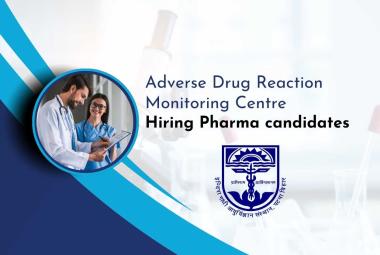About Authors:
*1P.SanilKumar, 1C K. Dhanapal, 2Sandhya Ravi
1Department of Pharmacy,
Annamali University, AnnamaliNager,
Chidambaram, Tamilnadu.
2Lotus Labs Pvt Ltd,
No.07, Jasmabhavan Road, Vasanthanager, Bangalore, Karnataka.
*sanilmpharm@gmail.com
ABSTRACT
Hospitals are created for cure the disease but not for the spreading of diseases, even though this statement is true to the theoretical concept but it is not possible practically due to various risk factors. The spread of infection in the hospitals occurs due to the microorganism. Nosocomial infections add significantly to the economic burden of managing the underlying disease that has lead to hospitalization of the patient. More than 90% of reported infections are bacterial where as viral, fungal or protozoal infections are less commonly involved in hospital-acquired infections. This project deals with bacterial nosocomial pathogens only, since they are by far major causes of nosocomial infections. Objective of the present study include the identification, prevention and control of nosocomial infection in our hospitals. The ultimate aim is the reduction of nosocomial infections and their costs. Baseline study for morbidity pattern in the hospitals, finding sources of exogenous and endogenous sources of nosocomial infection. Suggest measures to minimize the nosocomial infections and suggest guidelines for efficacious management of nosocomial infections.
[adsense:336x280:8701650588]
Refrence Id: PHARMATUTOR-ART-1290
The results of the present study indicates that the microorganisms causing postoperative wound infections were staphylococus ureus(48%), E.coli(22%), Klebsiella(18%). Pseudomonas aeruginosa(10%) and other cocci and Bacilli(2%).For the prevention and management of nosocomial infections in hospitals we should clearly understand and identify the nosocomial infections and device a system to track, analyse, monitor, prevent and treat. Hospitals should form a infection control committee.The committee should include wide representatives from various department. The hospital infection control committee may review the developed guidelines and implement it for the prevention and management of nosocomial infections. Implementation and monitoring the performance of the developed guidelines for the management of nosocomial infections.
KEY CONCEPTS
*What is the most common types of nosocomial infections are
*What impact nosocomial infections have on healthcare
*How nosocomial infections increase the cost of healthcare
*Why preventing nosocomial infections is important
BACKGROUND
“Nosocomial infections are widespread. They are important contributors to morbidity and mortality. They will become even more important as a public health problem with increasing economic and human impact because of:
*Increasing numbers and crowding of people.
*More frequent impaired immunity (age, illness and treatments).
*New microorganisms.
*Increasing bacterial resistance to antibiotics.
Nosocomial (hospital-acquired) infections are an important focus of infection prevention in all countries, but in developing countries they are amajor cause of preventable disease and death. The most important are:
*urinary tract infections, pneumonia and diarrhea;
*infections following surgery or invasive medical procedures; and
*maternal and newborn infections.
The organisms causing most nosocomial infections usually come from the patient’s own body (endogenous flora). They also can come from contact with staff (cross-contamination), contaminated instruments and needles, and the environment (exogenous flora). Because patients are highly mobile and hospital stays are becoming shorter, patients often are discharged before the infection becomes apparent (are symptomatic). In fact, a large portion of nosocomial infections in hospitalized patients—and all from ambulatory care facilities—become apparent only after the patients are discharged. As a consequence, it is often difficult to determine whether thesource of the organism causing the infection is endogenous or exogenous. Rates of nosocomial infections are markedly higher in many developing countries, especially for infections that are largely preventable (e.g., those following surgical procedures such as cesarean section). In these countries, nosocomial infection rates are high because of a lack of supervision, poor infection prevention practices, inappropriate use of limited resources and overcrowding of hospitals. Key contributing factors are:
*inadequate standards and practices for operating blood transfusion services
*increasing use of invasive medical devices (e.g., mechanical ventilators, urinary catheters and central intravenous lines) without proper training or laboratory support
*use of contaminated intravenous fluids, especially in hospitals making their own IV solutions
*antibiotic resistance due to overuse of broad spectrum antibiotics; and
*unsafe and frequently unnecessary injections .
The latter is most important. For example, after reviewing a number of studies, concluded that more than 50% of injections in developing countries are unsafe (i.e., the needle, syringe or both are reused)and many injections are unnecessary (e.g., routine injections of vitamin B-12 or antibiotics). A major consequence of this is that an estimated 80,000 to 160,000 new HIV infections occur annually in the world, and even more cases of HBV and HCV occur worldwide each year as a result of unsafe injections ).
Understanding Nosocomial Infections
The role of Transmission-Based Precautions in minimizing the risk of nosocomial infections information is presented regarding the epidemiology, microbiology, risk factors and practical measures for preventing nosocomial infections involving the urinary, gastrointestinal and respiratory systems as well those following surgery , the use of intravascular devices and maternal and newborn infections . Also included is information on how to:
*manage food and water sources in hospitals and clinics in order to prevent food- and waterborne outbreaks; and
*assure a continuous source of clean and safe water for drinking and medical use (e.g., handwashing and instrument cleaning) .
[adsense:468x15:2204050025]
DEFINITIONS
*Contaminated. State of having been actually or potentially in contact with microorganisms. As used in healthcare, the term generally refers to the presence of microorganisms that could be capable of producing disease or infection.
*Laboratory-acquired infection. Nosocomial infection resulting from performance of laboratory activities by staff, regardless of how it occurred.
*Nosocomial or hospital-acquired infection (terms used interchangeably). Infection that is neither present nor incubating at the time the patient came to the hospital. (Nosocomial refers to the association between care and the subsequent onset of infection. It is a time-related criterion that does not imply a cause and effect relationship.)
*Occupational injury or infection. Injury or infection acquired by healthcare staff
IMPACT OF NOSOCOMIAL INFECTIONS
Nosocomial infections add to functional disability, emotional stress and may, in some cases, lead to disabling conditions that reduce the quality of life. In addition, nosocomial infections have now become one of the leading causes of death . The impact of nosocomial infections takes on even more significance in resource-poor countries,especially those affected most by HIV/AIDS, because recent findings strongly suggest that unsafe medical care may be an important factor in transmitting HIV . During the past 10–20 years little progress has been made in addressing the basic problems responsible for the increasing rates of nosocomial infections in many countries, and in some countries, conditions are actually worsening. Nosocomial infections increase the cost of healthcare in the countries least able to afford them through increased:
*length of hospitalization;
*treatment with expensive medications (e.g., antiretroviral drugs for HIV/AIDS and antibiotics); and
*use of other services (e.g., laboratory tests, X-rays and transfusions).
As a consequence, in resource poor countries, efforts to prevent nosocomial infections must assume even greater importance if progress is to be made in improving the quality of patient care in hospitals and other healthcare facilities.
PREVENTING NOSOCOMIAL INFECTIONS
Most of these infections can be prevented with readily available, relatively inexpensive strategies by:
*adhering to recommended infection prevention practices, especially hand hygiene and wearing gloves;
*paying attention to well-established processes for decontamination and cleaning of soiled instruments and other items, followed by either sterilization or high-level disinfection; and
*improving safety in operating rooms and other high-risk areas where the most serious and frequent injuries and exposures to infectious agents occur.Unfortunately, not all nosocomial infections are preventable. For example,some reflect the influence of advanced age, chronic diseases such as uncontrolled diabetes, end-stage kidney disease or advanced pulmonary emphysema, severe malnutrition, treatment with certain drugs (e.g.,antimicrobials, corticosteroids and other agents that decrease immunity),the increasing impact of AIDS (e.g., opportunistic infections) and irradiation.
REFERENCES
1. Alvarado CJ. 2000. The Science of Hand Hygiene: A Self-Study Monograph. University of Wisconsin Medical School and Sci-Health Communications. March.
2. Ducel G. 1995. Les nouveaux risques infectieux. Futuribles: 203: 5–32.
3. Emori TG and RP Gaynes. 1993. An overview of nosocomial infections, including the role of the clinical laboratory. Clin Microbiol Rev 6(4): 428–442.
4. Gisselquist D et al 2002. HIV infections in sub-Saharan Africa not explained by sexual or vertical transmission. Int J STD AIDS 13(10): 657–666.
5. Lynch P et al. 1997. Infection Prevention with Limited Resources. ETNA Communications: Chicago.
6. Kane A et al. 1999. Transmission of hepatitis B, hepatitis C and human immunodeficiency viruses through unsafe injections in the developing world: Model-based regional estimates. Bull World Health Organ 77(10): 801–807.
7. Mayon-White RT et al. 1988. An international survey of the prevalence of hospital-acquired infection. J Hosp Infect 11(Suppl A): 43–48.
8. Ponce-de-Leon S. 1991. The needs of developing countries and the resources required. J Hosp Infect 18 (Suppl A): 376–381.
9. Simonsen L et al. 1999. Unsafe injections in the developing world and transmission of bloodborne pathogens: A review. Bull World Health Organ 77(10): 789–800.
10. Tikhomirov E. 1987. WHO programme for the control of hospital infections. Chemiotherapia 6(3): 148–151.
NOW YOU CAN ALSO PUBLISH YOUR ARTICLE ONLINE.
SUBMIT YOUR ARTICLE/PROJECT AT articles@pharmatutor.org
Subscribe to PharmaTutor Alerts by Email
FIND OUT MORE ARTICLES AT OUR DATABASE









